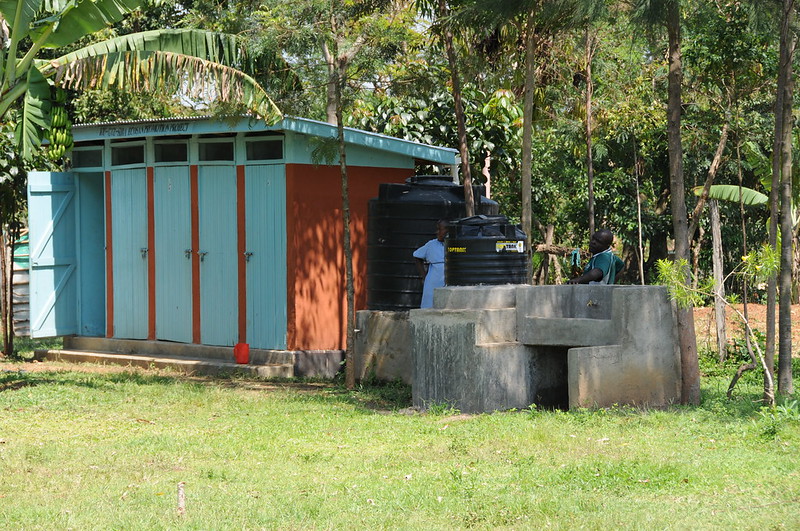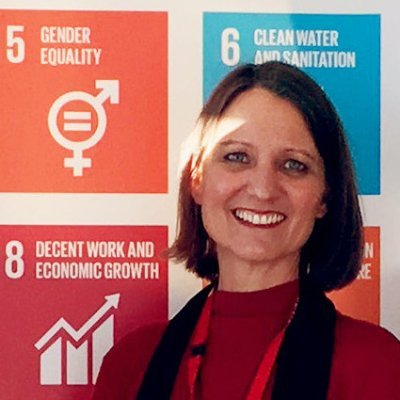Incontinence is a silent issue facing many, including children and adults with disabilities, people with chronic health conditions, and older people. The need is rapidly growing as populations age.
Assistive technology is a broad topic, involving the whole ecosystem that surrounds successful access to many different types of products. Assistive products can be grouped into six function domains.
Self care products include those that enable people to go to the toilet with dignity – including catheters and absorbent products and toilet chairs. Self care products also include shower chairs, and eating, drinking and dressing aids. Environmental adaptations, for example to a bathroom also fall within this group.
WHO recognizes access to assistive technology as a human right, and promotes the integration of assistive technology services into all tiers of health systems wherever possible. Our mandate is to provide technical guidance and support to WHO Member States, including through the development of normative documents – such as procurement specifications, training, guidelines.
On May 16, we launched the first Global Report on assistive technology, which will show that the need is greater than previously estimated of 1 billion of the global population; and confirms that the need is rapidly growing as populations age.
And yet – we are well aware that there is considerable global inequity when it comes to access. The greatest unmet need is in low and middle income countries, where health resources are scarce, awareness of available products is least, and poverty is greatest.
Even more concerning is that our data tells us very little about the need for continence products. For the Global Report, we have used population surveys to understand the need for assistive technology. However we know that people are unlikely to self report a need for continence products. We have also used information from governments – however again, we know that health providers in low and middle income countries may not identify or collect data about continence.
Our data tells us very little about the need for continence products. For the Global Report, we have used population surveys to understand the need for assistive technology. However we know that people are unlikely to self report a need for continence products.
However, through 30 years’ experience working in low income countries, and liaising closely with colleagues who are in the front line of health services – I see that incontinence is a silent issue facing many, including children and adults with disabilities, people with chronic health conditions, and older people.
Kerry’s story is an example of this. She lives in Papua New Guinea. Kerry has spina bifida, however has never had any formal medical or rehabilitation care that focuses on her incontinence. She and her family have had to manage on her own, with limited facilities.
She has not had access to catheters, and uses single use absorbent products when she can afford it or goes without. Using single use products is difficult as she has no means of disposing of the product, because there is no rubbish collection in the informal settlement in which she lives. Keeping clean is a constant challenge – because she cannot access the bathroom in her house, and has to use a make-shift lean to outside. She can only wash there at night when it is dark, and even then she is afraid for her safety.
Kerry’s story illustrates the complexity of the issues, and the need for solutions that are multi-faceted.
Successful access to assistive technology requires a system orientated approach, which takes into account the: person – and four other key factors: products, provision, personnel and policy.
Lets look at these four factors one by one:
Product affordability, acceptability and availability is key – in Kerry’s case, even if absorbent products were the most suitable solution for her, the lack of infrastructure in her country, as in many others, to dispose of single use products is a huge challenge. So too is having a consistent supply chain to avoid stock outs. At the same time, washable products would be equally challenging as Kerry has limited access to water and space to dry them. If she had access to catheters, Kerry would still face challenges due to the lack of privacy and cleanliness of her toilet and bathing area; and disposal of course remains an issue. She needs a product that is reliably available and sustainable for her use in her environment.
Product affordability, acceptability and availability is key.
Provision, or the service delivery model which supports people’s access to the assistive technology they require is also critical. For continence products, this must include proper medical diagnosis in the first place, to ensure that a product is not provided when in fact medical or rehabilitation care could resolve the problem, and to identify the most appropriate product.
At present, our team is working with Southampton University to carry out research exploring the experiences of people in Romania, Papua New Guinea and India trialing absorbent washable products. A challenge in this project has been ensuring that people recruited to the trial are in fact candidates for absorbent products – rather than another continence solution. There is simply not the health services available, with trained personnel, to adequately assess and advise people about the most appropriate continence product for them – or in fact alternative product options.
Which leads me to the need for there to be personnel who are trained to identify who may need continence support, who have the training required to respond appropriately – whether that is a referral, for example by a health worker at primary health care level to more specialist care, or to take action themselves with safe provision of simple products.
The training we are carrying out in Papua New Guinea is part of a broader project to develop online training in assistive products for primary health personnel – which includes a module on absorbent products, with a module on catheters to follow. We have been hugely impressed by the response to the self care modules from primary health workers – who have reported that they have not previously considered asking their patients about issues with their self care, and did not consider that if they did there was anything that they could do. There is willingness – although without more human resources and the products being available, not a lot will in fact change.
Which is where policy comes in – because policy and financing mechanisms are required in order to support the provision of continence products to those in need, expansion of the scope of health personnel to include assistive technology in general, and continence products specifically; as well as there being cross sectoral issues such as waste management and the built environment.
In thinking about solutions – keep in mind the 5Ps – the people, products, provision systems, personnel and policy – that need to work together in order to create sustainable solutions.
And secondly – think about solutions that have the potential to be global in reach, that could work in the less than ideal settings that people such as Kerry live in – bearing in mind that 70% of the world’s population live in low and middle income countries and 10% live in extreme poverty – where the realities of daily living are very different to what is experienced in high income countries.
The article is based on Kylie Shae’s presentation at TISCARE2022-conference.






